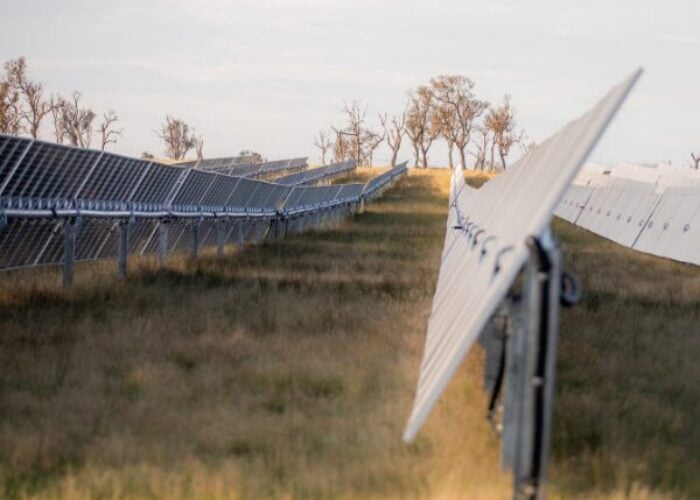Not all the news from First Solar’s second-quarter conference call was good. Granted, the CdTe thin film leader impressed again with its continued benchmark performance on productivity, lowest cost per watt and revenue generation, however the sombre note regarded pricing pressure seen from the traditional c-Si module manufacturers.
The key battleground appears to be Germany. Until the U.S. market actually takes off, which most market analysts now believe to be a 2010 occurrence, all solar eyes have returned to the German market as potentially a 2GW market in 2009, the biggest on the planet, once again?
As polysilicon prices continue a decline (US$60 per Kg, current) that could fall to below US$50 by year-end, c-Si module prices are falling fast and have started to squeeze on the prices for CdTe modules in Germany.
Try Premium for just $1
- Full premium access for the first month at only $1
- Converts to an annual rate after 30 days unless cancelled
- Cancel anytime during the trial period
Premium Benefits
- Expert industry analysis and interviews
- Digital access to PV Tech Power journal
- Exclusive event discounts
Or get the full Premium subscription right away
Or continue reading this article for free
First Solar has now adopted a defensive position in this most important of regional markets.
Mike Ahearn, First Solar’s CEO and Chairman, said the following in the conference call with financial analysts:
“What we’re going to do is initiate a rebate program that is focused exclusively on our core markets in Germany free field and commercial rooftop markets. So essentially as modules are installed in these core markets, a rebate will be made available that effectively improves the module economics. The way we calculate it, in general, we make a determination of what we consider the best-in-class crystalline silicon module benchmark price for the quarter to the period. We apply a discount to that benchmark price that in our view makes our offering at a system level attractive. That rebate is earned by the project when it is installed so the project financing has to be in place and completed. Then we review the situation periodically to determine whether we need to steepen the rebate level, reduce it, or eliminate it altogether.”
Ahearn also noted in the call that price competition in Germany was ‘aggressive’ and the market was full of ‘turmoil and uncertainty.’
The rebate program will of course mean that margins are affected going forward and could well be in place for over a year, as module overcapacity and weaker-than-expected demand due to the continued funding constraints will take most of 2010 before starting to ease.
The c-Si manufacturers may also adopt a similar scheme as many trying to win business in Germany, manufacture overseas. This means that from the time modules are shipped from Asia and land in German warehouses, the competitive price range has already fallen. First Solar is not immune to this problem and rebates take care of that time/shipping delay.
First Solar has also reiterated its revenue guidance for 2009, which remains at between US$1.9 billion and US$2.0 billion. However, that will mean greater volume now that prices are being squeezed. This could mean that from a financial performance level, First Solar has peaked for 2009.
Crystalline silicon module manufacturers are back, and back with a vengeance.





